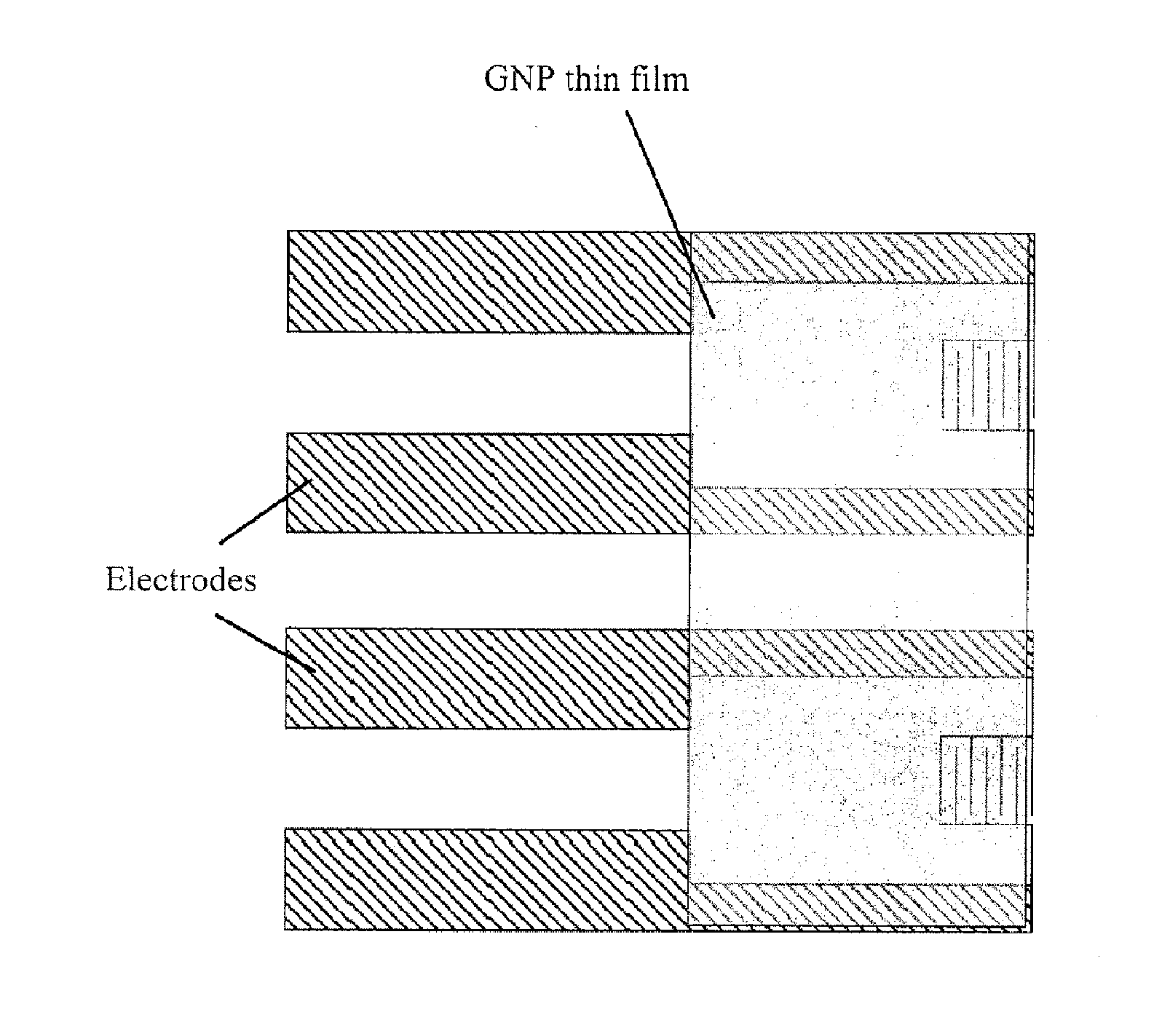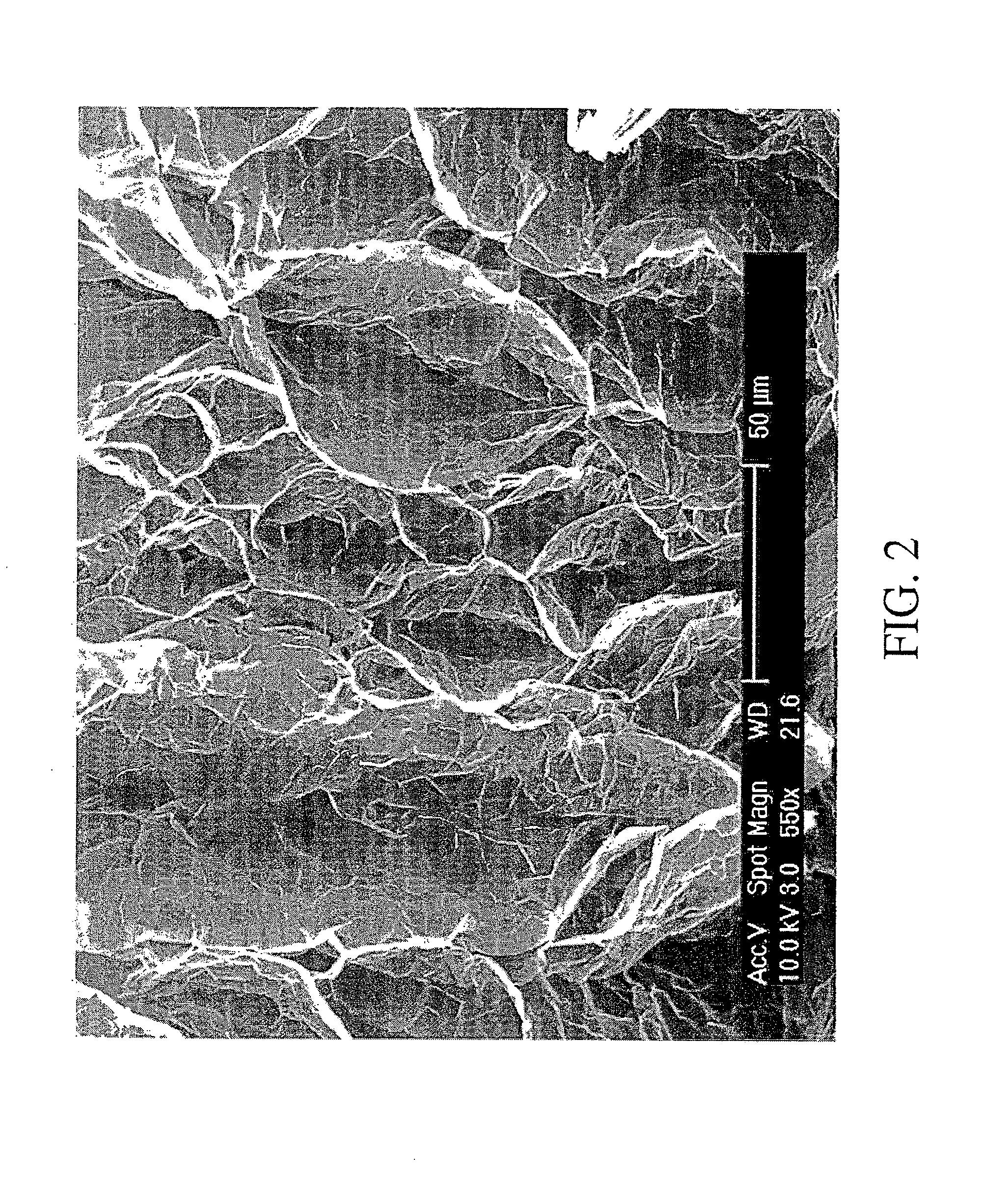Graphite nanoplatelets for thermal and electrical applications
a graphite nanoplatelet and thermal and electrical technology, applied in the field of composite materials, can solve the problems of system failure, degrade the performance and reliability of the overall system, and increase the problem of heat dissipation of electronic components
- Summary
- Abstract
- Description
- Claims
- Application Information
AI Technical Summary
Benefits of technology
Problems solved by technology
Method used
Image
Examples
example 1
[0059]Thermal conductivity measurements of epoxy-composites with a carbon loading of approximately 0.054 volume fraction were performed in order to identify the thermal conductivity enhancements obtained using GNP-reinforcements. In order to assess the enhancement of thermal conductivity due to the use of GNPs as fillers, the GNP-composites are compared to comparable epoxy composites prepared with graphite microparticles. A dispersion of natural graphite flakes in acetone was prepared by grinding and sieving the graphite flakes, to reduce the particle size, followed by shear mixing for about 30 min and then bath ultrasonication for about 24 h. Subsequently, the dispersion was mixed with the epoxy and cured as discussed above in reference to the GNP composites. These unprocessed graphite composites possessed a length of approximately 30 μm and a thickness of approximately 10 μm.
[0060]Thermal conductivity measurements were performed as follows. Disc shaped samples ...
example 2
Electrical Conductivity
[0071]The electrical conductivity of the epoxy-composites with various weight fraction loadings of graphitic and SWNT materials was probed by four point measurement. FIG. 10 demonstrates that the incorporation of the graphite nanoplatelets increases significantly the electrical conductivity of the epoxy composites and, furthermore, that the enhancement depends on the exfoliation temperature. The highest electrical conductivity was found in the GNP-800 composites. The electrical conductivity of GNP-800-epoxy composites was found to be significantly higher than that of the p-SWNT composites at substantially all loadings. Advantageously, this result illustrates that GNPs may provide an economical alternative to SWNTs. Further, at filler weight fractions of about 0.02 in GNP-800 and GNP-200, the electrical conductivity of the composite increases above about 10−8 S / cm, which is approximately the threshold for anti-static applications.
[0072]At loadings above about 0...
example 3
Near-Infrared Applications
[0074]Embodiments of the present disclosure can also exhibit significant absorption properties at or about near-infrared range of the electromagnetic spectrum. As such, various features of the embodiments of the present disclosure can be combined with such absorption properties to allow implementations that include, for example, near-IR detectors.
[0075]In summary, embodiments of the present disclosure provide controlled exfoliation of graphite intercalation compounds which may be carried out at selected temperatures in an inert atmosphere to obtain exfoliated graphite having varied aspect ratios.
[0076]Other embodiments of the disclosure provide bulk scale stabilization of dispersions of individual graphite nanoplatelets (GNPs) by utilizing shear mixing and ultrasonic treatments. The average aspect ratio of GNPs samples can be varied between about 30 and 200.
[0077]Further embodiments of the present disclosure provide few graphene layer GNPs, as compared to c...
PUM
| Property | Measurement | Unit |
|---|---|---|
| thickness | aaaaa | aaaaa |
| thickness | aaaaa | aaaaa |
| electrical conductivity | aaaaa | aaaaa |
Abstract
Description
Claims
Application Information
 Login to View More
Login to View More - R&D
- Intellectual Property
- Life Sciences
- Materials
- Tech Scout
- Unparalleled Data Quality
- Higher Quality Content
- 60% Fewer Hallucinations
Browse by: Latest US Patents, China's latest patents, Technical Efficacy Thesaurus, Application Domain, Technology Topic, Popular Technical Reports.
© 2025 PatSnap. All rights reserved.Legal|Privacy policy|Modern Slavery Act Transparency Statement|Sitemap|About US| Contact US: help@patsnap.com



